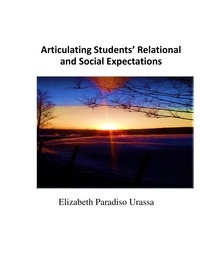DOWNLOADS Articulating Students’ Relational and Social Expectations of a Competent Supervisor
Articulating Students’ Relational and Social Expectations of a Competent Supervisor pan Elizabeth Paradiso Urassa
Caractéristiques
- Articulating Students’ Relational and Social Expectations of a Competent Supervisor
- Elizabeth Paradiso Urassa
- Format: Pdf, ePub, MOBI, FB2
- ISBN: 9788299867238
- Editeur: Information is Power
- Date de parution: 2022
Téléchargement complet gratuit de Bookworm Articulating Students’ Relational and Social Expectations of a Competent Supervisor
Overview
Student attrition is a persisting challenge that scholars have identified for years. The problem affects higher education institutions worldwide, regardless of structure (full-time, part-time), levels (doctoral, master, and bachelor degrees), and resources. Although many issues contribute to the problem, the student's social isolation is among the leading causes. Higher education is a multicultural learning environment with an increased student population with diverging relational and social needs and anticipations.
In most cases, supervision of research students is individual teaching and guidance, allowing students and supervisors to decide the learning style to apply to fulfill the requirements. Therefore, students depend on supervisors in different areas of their learning, and their relationships catalyze successful cooperation. Even though some resourceful universities provide students with other learning agencies, the heavy load remains on the supervisors' shoulders.
Unfortunately, many people join higher education without the knowledge and skills to work with their supervisors. Most do not know what information to share or the social-relational aspects required to obtain appropriate support. As a result, supervisors do not comprehend their expectations and do not support them in fulfilling what they do not know. Likewise, lacking conversation about expectations may result from the weak social relationship between supervision partners (students and supervisors).
In most cases, students find more comfortable sharing their academic expectations with their supervisors over social relationships. Thus, the student's responses can benefit those with challenges communicating social relationships they expect from their supervisors. I believe the supervisors and students who review and grasp the message in this book and work toward communicating the expectations while strategizing to suit their context will fulfilling them.
Nevertheless, they should create shared social relational expectations that are realistic based on the nature of the contextual culture and resource availability, without forgetting the nature of students' projects. Other determinants to consider when communicating expectations are partners' language capability, readiness to learn from each other, and willingness to cooperate. Therefore, the first chapter of this book reminds readers of higher education learning structure and practice and how student attrition has affected the purpose of higher education.
In addition, statistical information about student attrition from different countries is provided to indicate the seriousness of the problem. In the second chapter, I explain student learning goals and the support they need from their supervisors. Moreover, chapters three and four discuss supervisors' social behavior and repercussions in supervision, expecting them to adjust and communicate accordingly.
Finally, in chapter five, I discuss the kind of communication research students appreciates from their supervisors. Indeed, supervision is communication between students and supervisors for learning purposes and is the most vital duty in research learning. Without constructive and understandable communication, students and supervisors cannot collaborate. Failure to understand each other as persons and partners while practicing acceptable and applicable social relational behavior may hinder their cooperation.
Student attrition is a problem caused mainly by the failure of supervision partners to communicate their expectations, strategize, and fulfill them. If practiced, the book's discussion, descriptions, and recommendationsSo, by reading this book, you demonstrate your concern about student attrition, and you can spread information to help someone out there who is about to give up.
Lire aussi: [PDF/Kindle] Amazing Animal Journeys: The Most Incredible Migrations in the Natural World by Philippa Forrester, Philippa Forrester download pdf, Descargar PDF ONCE MINUTOS here, SEMILLAS PARA EL ALMA MARTA ABRIL ePub gratis read book, {epub download} We Have Always Lived in the Castle: (Penguin Classics Deluxe Edition) by read book, Online Read Ebook Fragile Things: Short Fictions and Wonders by Neil Gaiman read pdf, [PDF EPUB] Download A Thing Called Snow by Full Book download pdf, Read [Pdf]> Pop-Up Design and Paper Mechanics: How to Make Folding Paper Sculpture by Duncan Birmingham site,


0コメント